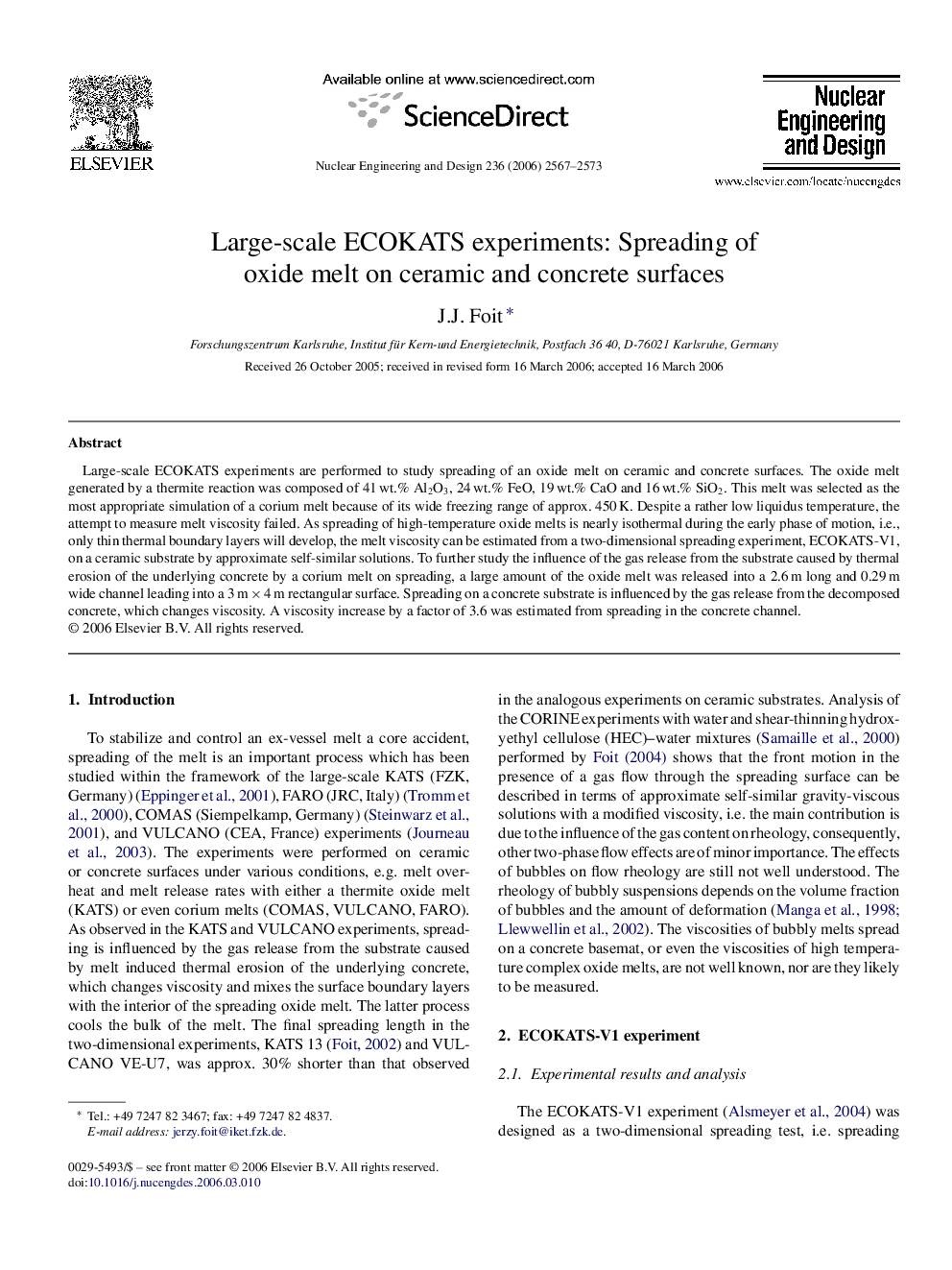| Article ID | Journal | Published Year | Pages | File Type |
|---|---|---|---|---|
| 299164 | Nuclear Engineering and Design | 2006 | 7 Pages |
Large-scale ECOKATS experiments are performed to study spreading of an oxide melt on ceramic and concrete surfaces. The oxide melt generated by a thermite reaction was composed of 41 wt.% Al2O3, 24 wt.% FeO, 19 wt.% CaO and 16 wt.% SiO2. This melt was selected as the most appropriate simulation of a corium melt because of its wide freezing range of approx. 450 K. Despite a rather low liquidus temperature, the attempt to measure melt viscosity failed. As spreading of high-temperature oxide melts is nearly isothermal during the early phase of motion, i.e., only thin thermal boundary layers will develop, the melt viscosity can be estimated from a two-dimensional spreading experiment, ECOKATS-V1, on a ceramic substrate by approximate self-similar solutions. To further study the influence of the gas release from the substrate caused by thermal erosion of the underlying concrete by a corium melt on spreading, a large amount of the oxide melt was released into a 2.6 m long and 0.29 m wide channel leading into a 3 m × 4 m rectangular surface. Spreading on a concrete substrate is influenced by the gas release from the decomposed concrete, which changes viscosity. A viscosity increase by a factor of 3.6 was estimated from spreading in the concrete channel.
